Microneedling vs Derma Rolling: Which Is Best For You?
Microneedling vs Derma Rolling: Which Is Best For You?
Taking years or signs of stress off your complexion requires some tear, repair and care. Whether you want to turn back your skin’s age or undo the damage caused by the sun, poor skincare habits or lifestyle choices, collagen-stimulating treatments are your best bet to reclaim your complexion’s natural glow from within. Microneedling and derma rolling are probably two of the first options that come to mind. While they serve a similar purpose, the main difference between microneedling and derma rolling comes down to the cost, convenience and efficacy of each treatment. Both microneedling and derma rolling provide a workout for your skin barrier. These practices create varying degrees of micro-tears on the outer layers of the skin to induce collagen and elastin production, which strengthens the skin barrier and leaves you with a more supple, softer and healthier complexion.
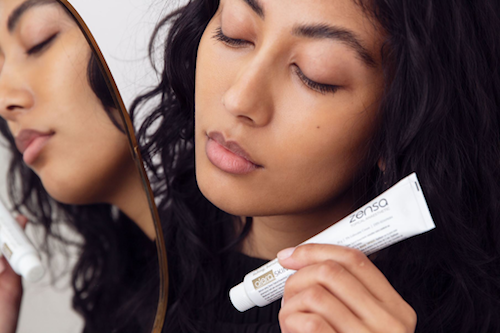
Read on to learn more about microneedling, derma rolling, the best prep and after-care practices and how to decide which option is best for you.
What is Microneedling?
Also known as collagen induction therapy, microneedling is a cosmetic treatment done by a professional, such as an esthetician or a dermatologist. Microneedling utilizes a micro-pen device with tiny needles that create micro-injuries through the skin’s epidermis (top layer) to the dermis (middle layer). This process triggers the body’s wound-healing response to accelerate collagen production and unveil a new layer of smoother, more even-toned skin.
Microneedling treats (acne) scars, wrinkles, fine lines, enlarged pores, stretch marks, sun spots, other causes of hyperpigmentation and alopecia areata. Some of the main benefits of microneedling include increased skin elasticity, smaller pores, brighter skin tone, improved skin texture, sun damage reversal or signs of more radiant mature skin. In the long term, microneedling can help prevent new acne breakouts from forming (due to the decreased pore size) and have an overall anti-aging effect on the skin (higher levels of collagen and elastin prevent wrinkles and visible sun damage).
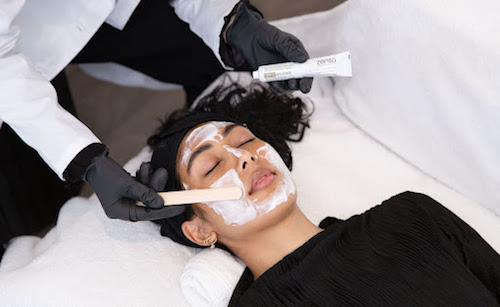
Most individuals will need 3-6 microneedling sessions to see their desired results. Your skin concern(s) and age will be the main determining factors in how many microneedling sessions you need. Minor skin concerns, like minimizing pores, will typically require the least number of sessions. Moderate skin issues, such as wrinkles, fine lines and surface-level scarring or hyperpigmentation, often require at least 3-4 microneedling sessions. Individuals with deep scarring or marks are more likely to need up to 6 microneedling sessions for best results.
Microneedling sessions should be booked 4-6 weeks apart. This grace period provides your skin with enough time to heal and repair. Each microneedling session takes approximately 1-2 hours from start to finish. This time includes consulting with your specialist, applying the topical anaesthetic (like Zensa Numbing Cream), allowing the numbing cream to take effect and the treatment itself. The numbing cream should be left on for 30-45 minutes before beginning the procedure. Microneedling treatments should take a total of 20-30 minutes to perform.
What is Derma Rolling?
Derma rolling is a form of microneedling that can be done at home, which offers a less invasive, more budget-friendly alternative to an in-office cosmetic treatment. The process involves using a small handheld device with a small rolling head that contains hundreds of tiny needles used to gently prick the skin. Like microneedling, derma rolling creates controlled injuries on the skin. However, derma rollers penetrate the skin less deeply than microneedling devices used by professional estheticians. Potential benefits of derma rolling include increased collagen and elastin production, fewer wrinkles and fine lines, smaller pores and reduced scarring, stretch marks or signs of hyperpigmentation. There is a lot of debate among experts on the efficacy of derma rolling or the benefits of microneedling at home (more on this topic later).
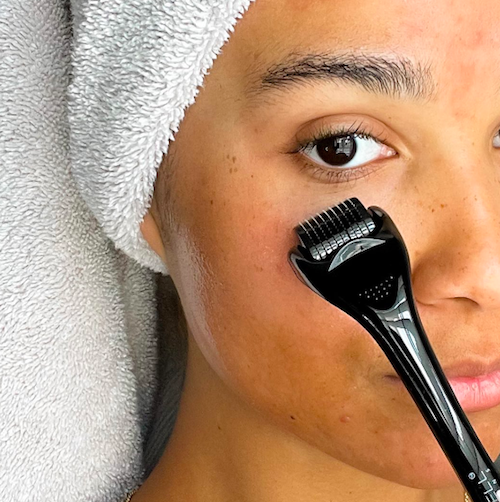
Credit: @elumestemcell/Instagram
Derma rollers typically should be used once every 3-4 weeks. However, some derma rollers can be used every few days, depending on needle size used and your skin type. Individuals with sensitive skin often are advised to use their derma roller less frequently. Needle lengths range from 0.25-.5 mm (for enlarged pores and blemishes) to 1.5 mm (for scarring, stretch marks, deep wrinkles or sagging skin). For reference, most professional microneedling devices have needle lengths from 1.0-3.0 mm (1.0-2.0 mm for the face and up to 3.0 mm for the body).
Always clean your derma roller with rubbing alcohol after each use, and store it in a plastic case. Replace your derma roller after every 10-15 uses.
Pain of Microneedling vs. Derma Rolling
Without any numbing agent, professional microneedling is nearly guaranteed to be more painful than an at-home option like derma rolling. However, estheticians and dermatologists almost always use a topical anaesthetic (like Zensa Numbing Cream) before beginning the treatment. If you give the numbing cream enough time to take effect, your microneedling experience should not be painful, but it might feel slightly uncomfortable. When numbing cream is used, many clients describe microneedling as feeling like they’re being scratched or poked during the procedure.
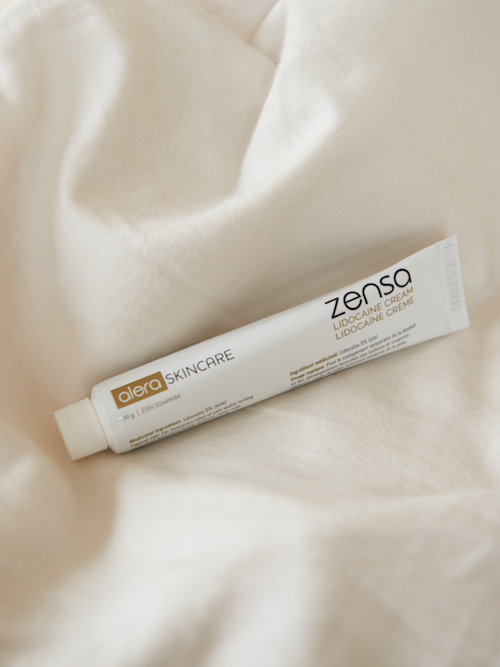
The pain from derma rolling ranges from general discomfort (like sandpaper grazing your skin) to considerably painful, depending on the needle length and your personal pain tolerance. If you’re experiencing pain, choose a derma roller with needles that are 1.0 mm long or under, and make sure not to apply too much pressure when using the derma roller on your skin. However, some individuals use numbing cream with their derma rollers to avoid the pain.
Cost of Microneedling vs. Derma Rolling
It’s no secret that there’s a considerable cost discrepancy between professional microneedling services and a DIY option like derma rolling. A single microneedling session can cost anywhere from $200 - $700, depending on your location, your specialist’s expertise level and the office’s ambiance. Derma rollers cost between $20-$200, depending on the device’s construction, add-ons, quality and length of the needles.
Why Choose Microneedling Over Derma Rolling
While microneedling is expensive, it is not worth sacrificing your skin health to save some money in the short term. Stick to what you know. When it comes to microneedling, it’s best to leave the skin pricking to the professionals. Derma rolling is not designed to offer the same level of skin improvement compared to professional microneedling and leaves a lot of room for user error – both when performing the procedure and sanitizing the needles. Microneedling devices are motorized, enabling controlled, even penetration throughout the entire procedure. With derma rolling, the manual process makes it easy for a user to allow the needles to penetrate at the wrong angle or too deeply, which can cause significant trauma to the skin.

Always defer to the experts if you can save up enough to invest in a professional microneedling experience. However, derma rolling can offer a way to upgrade your regular skincare routine if done properly with the input of your dermatologist or licensed esthetician. Regardless of the option you choose, always take proper care of your skin before and after microneedling (or derma rolling).
How To Prep Skin For Microneedling (or Derma Rolling)
The procedure begins in the preparation phase. Start treating your skin like it’s highly sensitive in the several days before your microneedling appointment. Stay out of the sun for the 48-72 hours before your microneedling session (unless you’re wearing a high SPF sunscreen). Avoid tanning beds for at least 5 days before your appointment. Avoid all laser treatments, botox, electrolysis and waxing sessions for 2 weeks before microneedling. Chemical peels should be done 4-6 weeks before microneedling treatments. When combined, these two procedures can help each other’s collagen-boosting benefits for your skin.
Accutane should be avoided for at least 6 months before any type of microneedling treatment. Stop taking any blood-thinning medications, including Aspirin, ibuprofen and other nonsteroidal anti-inflammatory drugs (NSAIDs) or nutritional supplements, such as fish oil, vegetarian omega-3, vitamin E, turmeric, ginger or garlic tablets, at least 72 hours before microneedling. If you’re prone to cold sores, contact your doctor to ensure that you take an antiviral medication 2 days before the procedure.
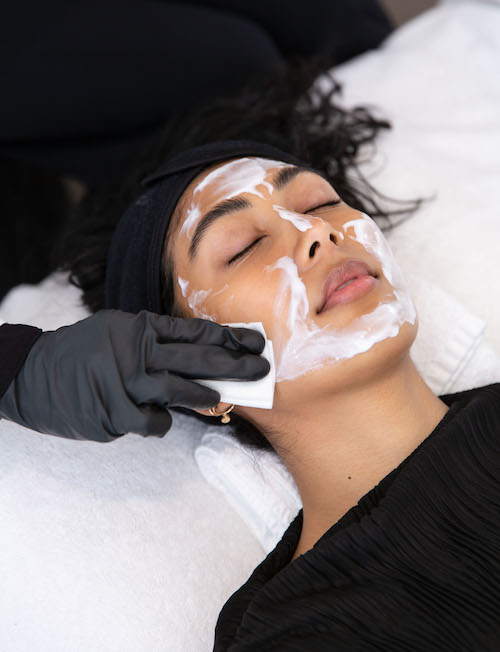
Embrace a more gentle skincare routine. Avoid using retinol, exfoliants, topical antibiotics, AHA or BHA acids for at least 48 hours before your microneedling session. Stop shaving at least 48 hours ahead of your appointment time.
For derma rolling, avoid using these previously-mentioned medications and harsh skincare products for at least 5 days before performing your at-home treatment. Make sure to wear sunscreen every day to protect the skin barrier. Before derma rolling, prep your skin with a cleanser and use a gentle chemical or fruit enzyme peel.
Best Microneedling (or Derma Rolling) After-care Practices
Expect to have particularly dry, sensitive skin for the first 1-3 days after microneedling. Normal side effects from microneedling include redness, burning, itchiness, swelling and a general tightness or soreness (similar to a sunburn). Exclusively use hyaluronic acid on your skin for the first few hours after your procedure. Hyaluronic acid is a humectant, meaning it helps draw and lock moisture into the skin. The benefits of hyaluronic acid include its ability to improve skin hydration and elasticity, help prevent dry, itchy skin and offer additional collagen-boosting benefits after microneedling.
Starting the morning after your microneedling treatment, wash your face twice daily with a gentle cleanser and lukewarm water. Follow up your cleansing routine with a naturally-hydrating product such as hyaluronic acid, coconut oil or a suitable fragrance-free lotion, like Zensa Healing Cream.

Zensa Healing Cream contains hyaluronic acid with aloe vera, shea butter and medicinal-grade calendula oil and grapefruit oil to promote wound-healing, hydrate and nourish the skin to calm any irritation, speed up the microneedling healing process and repair the skin barrier. Diligently follow your microneedling after-care routine for at least 3-4 days after your procedure (ideally, adhere to this skincare regimen for 1-2 weeks after microneedling). Apply sunscreen daily throughout the first week of the healing process.
Avoid wearing makeup for the first 48-72 after microneedling. Applying cosmetics to the healing skin too soon runs the risk of causing an infection. Remove any exfoliating products, glycolic acid, AHAs or BHAs, retinoids or vitamin C serums from your skincare regimen for at least 48 hours after your microneedling. Slowly reintegrate these items into your routine over the next week (depending on the state of your skin throughout the healing process).
Wait at least 2-3 days before restarting your workout routine after microneedling. The more intense the exercise (and more sweating involved), the longer you should hold off before participating in certain physical activity.
Avoid getting any cosmetic procedures (laser treatments, waxing, facials, botox, etc.) for at least 14 days after microneedling. Wait at least 4 weeks after your last microneedling appointment to get any fillers.

After derma rolling, only use hyaluronic acid for the first few hours after puncturing the skin. Incorporate hydrating serums like niacinamide or a nourishing moisturizer like Zensa Healing Cream into your derma rolling after-care routine. Always use gentle, fragrance-free cleansers and skincare products during the healing process. Wait to use exfoliants, glycolic acid, AHAs or BHAs, retinoids or vitamin C serums for at least 4-5 days after derma rolling. Apply sunscreen with at least SPF 30 every day. Avoid wearing makeup for 24 hours after derma rolling.

Microneedling vs. Derma Rolling Quick Facts
Cost of Microneedling:
$200-$700 per treatment (plus any antiviral treatment and skincare products needed before or after microneedling)
Cost of Derma Rolling:
$20-$200 (plus any skincare products needed before or after derma rolling)
Microneedling Treatment Frequency:
Between 3-6 treatments; at least 4-6 weeks apart
Derma Rolling Treatment Frequency:
Every few days or once every 3-4 weeks, depending on the derma roller used, your skin type and needs
Microneedling Pain Level:
Typically around a 2-4/10 on the pain scale (depends on numbing cream efficacy and individual pain tolerance)
Derma Rolling Pain Level:
Typically around a 2-3/10 on the pain scale (depends on the needle size and pressure applied, expect discomfort over pain)
Microneedling Healing Time:
Initial healing period:48-72 hours, Full recovery time: 1-2 weeks
Derma Rolling Healing Time:
Initial healing period: 24 hours, Full recovery time: 4-5 days
